Title : Distance perception on the vertical axis: multisensory interaction between visual and vestibular cues
Project Lead : Trk goston From : Doctoral School of Psychology, Etvs Lornd University; Institute of Cognitive Neuroscience and Psychology, RCNS HAS, Research Group for Developmental Psychophysiology (None)
Dates : from 2014-06-10 16:42:28 to 2015-02-09 19:26:04
Description :
Motivation and objectives :
>>Please note that, as detailed in the Work Plan below, this proposal is expected to utilise two units of access (i.e. 20 days) at the host institution (UCL). The contact details for the second proposer are included in her CV.<< We live in a colorful, loud and constantly changing world, but rarely have direct access to it. Although we are able to contact objects in reachable distances, most of the objects are in our farther environment and are perceived only by their chemical, photo or vibrational stimulation that reaches us. Our cognitive system uses several senses to utilize this wealth of multimodal cues to restore our spatial surrounding. During our evolutionary history the brain has developed to use and combine information from the same or different senses to judge size, speed and depth of distant objects (e.g. monocular and binocular cues). However the cognitive system has not evolved for representation per se but to provide better opportunities for our survival. A clear example for this is that toxic compounds in nature have usually unpleasant taste. Another manifestation of how perception is affected by evolutionary goals is the case of distance perception on the vertical axis. Even intuitively one can feel that the distance of a rock is different if we see it 20 meters ahead of us at the foot of a mountain or - from a precipice - 20 meters below us. This happens because the gravitational-vestibular information tells us that (even in a rare case where the visual input is the same) the objects vertical positions are different. Two major theories exist that predict how distance perception depends on elevation. The evolved navigation theory claims that the perceived risk modulates distance perception and because falling down is potentially more harmful than going up we perceive distances to be greater when looking down (Jackson and Cormack, 2007). In contrast to this, the gravity theory states that when judging distances, instead of judging the physical distance we judge how far it is to get there (Howard and Templeton, 1966). Therefore we perceive distances longer when going up and shorter when going down. Although at first sight the two theories seem to contradict each other, we think that they rather describe different situations. While the evolved navigation theory deals with situations that could lead to potential harm (falling off from a balcony), the gravity theory focuses more on effort and on situations that could cause tiring but are not harmful (hillside). Indeed a study of Jackson and Cormack, 2010 found that the lack of navigational risk affects distance judgements even in a non-navigable balcony situation. Although the opportunity for consolidating the two theories into a unified one is promising it lacks experimental validation. Moreover that unified theory has to have a single factor to create consistency between theories. On the one hand, although visual scenes change in function of elevation this change is not the same from scene to scene and so hardly explains why distance judgements are affected by elevation. On the other hand the pitch of the head (the angle relative to the horizon) and so the vestibular signal consistently change when we look down or up. Recently, Ferr and Haggard (under review) found that artificial activation of the vestibular system affects distance judgements, suggesting a specific contribution of the vestibular signals to the supramodal coding of space. Importantly, this implies a multisensory interaction between visual and vestibular inputs. Such connection between the two senses could provide a fast (preconscious) and effective way to infer the world and challenges around us. The present proposal aims to test the existence of this multisensory link and to map how distance judgement would be affected as a function of the pitch of the head.
Teams :
Unit 1: The Experimental Virtual Environments (EVENT) Lab for Neuroscience and Technology carries out research that is a unique combination of virtual reality, psychology and cognitive neuroscience, and includes computer scientists in the Faculty of Psychology, University of Barcelona, and neuroscientists at the Institut dInvestigacions Biomdiques August Pi i Sunyer (IDIBAPS). The virtual reality laboratory is led by Mel Slater and is located at the Universitat de Barcelona. The neuroscience aspects are led by Maria V. Sanchez (IDIBAPS). Unit 2: The Research Group of Developmental Psychophysiology was founded by Valria Cspe in January 2000. Our main research method is using EEG the measure event-related brain potentials (ERP), i.e. the time-locked, synchronized electrical activity of the human brain, elicited by various stimuli. Our primary research topics include the processing of auditory events, language processing, reading and number processing. These topics are studied in both adults and infants, and several other methods of cognitive psychophysiology, experimental and cognitive psychology and cognitive neuropsychology are applied.
Dates :
starting date : 06 October, 2014
ending date : 21 November, 2014
Facilities descriptions :
http://visionair-browser.g-scop.grenoble-inp.fr/visionair/Browser/Catalogs/REACTOR.UK.html
Recordings & Results :
In this project we seeked to find how the vestibular input affects distance estimation. In recent years two opposing views debated how distance estimation would be affected by vestibular input. Our experiments showed that distance are clearly underestimated when we look down and overestimated when we look up. These results have important implications in user interface design (e.g. where to put input interfaces and feedback if clear distance estimation is needed).
Conclusions :
Two experiments were conducted, with an adjustment of the experimental protocol after the first set of trials. Initial data looks promising, with significant effects of target gradient and GVS. Detailed analysis is currently taking place and we expect to publish the results.
Project Images :
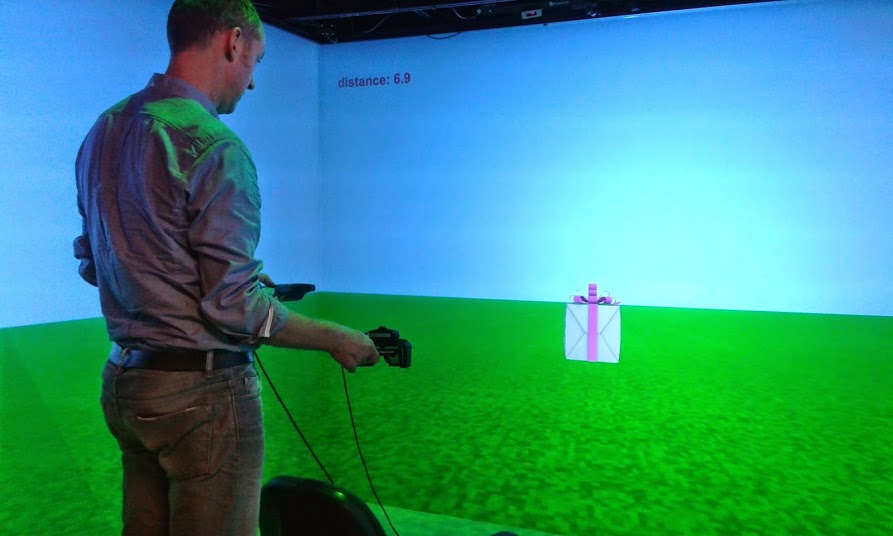
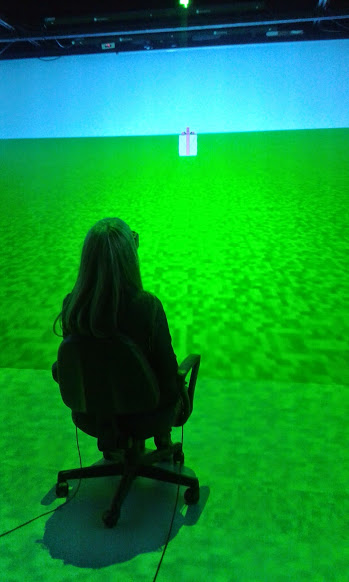
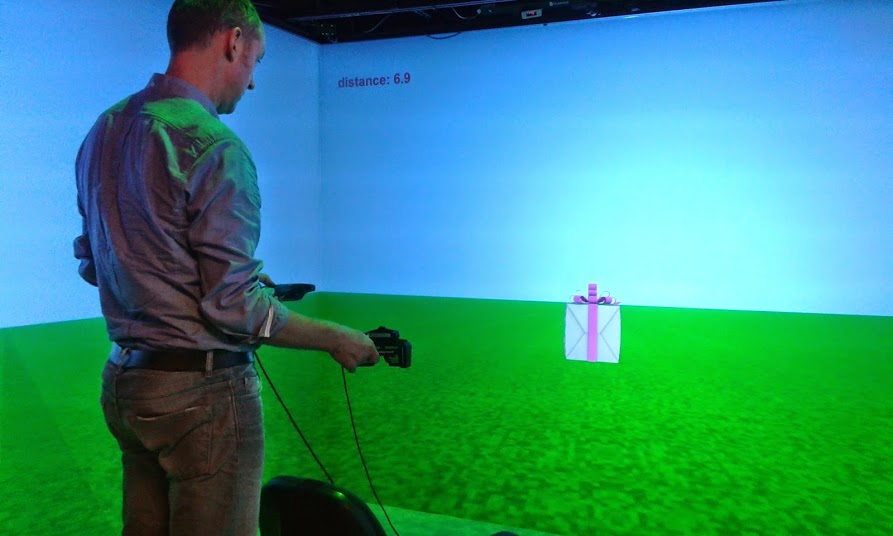
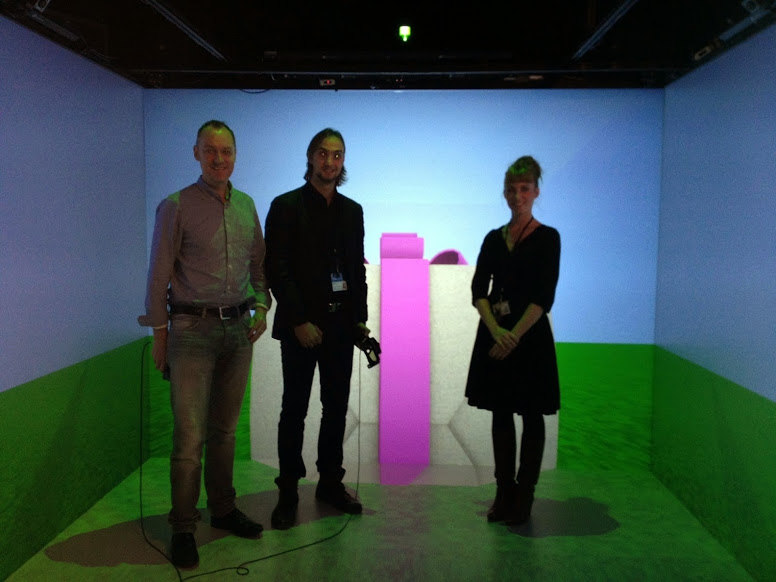
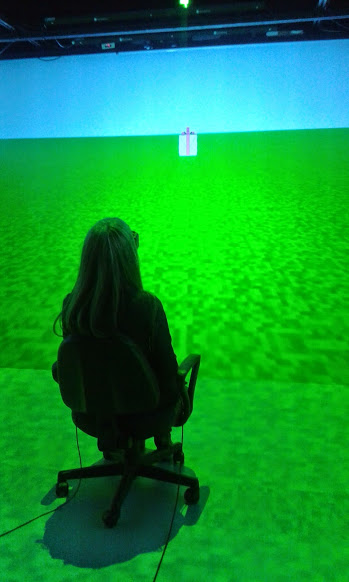
Other project resources :
Report.pdf
.

VISIONAIR / Grenoble INP / 46 avenue Felix Viallet / F-38 031 Grenoble cedex 1 / FRANCE
Project funded by the European Commission under grant agreement 262044

Project funded by the European Commission under grant agreement 262044
